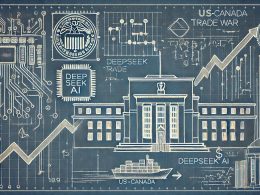by Eric Winograd, Senior Economist—United States, AllianceBernstein
There’s not much suspense around this week’s Fed meeting: the fed funds target rate is almost certain to rise by 25 basis points. We think it’s more important not to overlook this cycle’s endgame.
As the Federal Open Market Committee (FOMC) meeting kicks off, the market is pricing in a 96% probability of a quarter-point hike in the official short-term rate. With that outcome nearly certain, most of the speculation is focused on the path of the fed funds rate—specifically, the “dot plot” that signals the committee’s rate expectations—for the rest of 2018.
We think the intense focus on the near-term dots is misplaced. Whether the committee raises rates four times this year (our longstanding forecast) or three times really isn’t economically significant. What is significant is where the committee ends this rate cycle.
Two key concepts come into play here: the neutral rate and the terminal rate.
The Neutral Rate: Monetary Policy’s Sweet Spot
The neutral interest rate is the rate at which monetary policy is neither accommodative nor restrictive. In other words, it isn’t boosting growth and isn’t slowing it down. Think of it as an equilibrium rate; what would the fed funds rate be if growth and inflation were both at their natural rate on a stable basis?
Each quarter, the FOMC forecasts this interest rate, known as the long-run fed funds rate. Over the last few years, the Fed has reduced this estimate sharply, from 4% when the first set of forecasts was released to the current 2.8%.
Why has the neutral rate come down? Mainly because potential economic growth rates are declining as American society ages. But there’s also a cyclical element pulling the neutral rate down: the interest rate that the economy can withstand is lower when growth is slower.
Some analysts think the cyclical component will push the neutral-rate estimate up as the economy improves. This would signal the market that there’s more room to hike rates in the next few years than is currently expected. We don’t think the FOMC is ready to bump the neutral rate up yet, but even so, the market could be underestimating where rates will end up this cycle—a.k.a. the terminal rate.
The Terminal Rate: Where Will the Cycle End?
Every central banker wants to end rate-hike cycles with a terminal rate that’s equal to the neutral rate so that the economy is in stable equilibrium. The problem is that there’s no way to know what the neutral rate is in real time. As a result, central banks have a tendency to overshoot: they almost always end a cycle with rates too high, producing a slowdown and often a recession.
Markets struggle to reconcile the terminal rate and neutral rate, too. At least in the US, markets typically stop at the neutral-rate estimate when they’re assessing the future path of interest rates. In other words, markets systematically underestimate how high rates will go in a given cycle.
The Market Could Be Sleeping on Rate Hikes Again
The same thing is happening this time, and we think the risks are clearly on the high side: it’s more likely that rate hikes will exceed expectations than fall short. We see inflation rising, and in the past this has led to Fed rate hikes that were more aggressive than expected.
That said, we think the overshoot may be smaller in this cycle. The Fed is moving more slowly with hikes than ever before, so officials will likely see that they’ve overshot before rates get too much higher than the neutral rate. Some FOMC members have also seemed open to letting inflation run above the 2.0% target for a while, reducing the imperative to raise rates aggressively as the end of the cycle approaches.
Importantly, we haven’t heard that sort of discussion from Fed Chair Jay Powell. The market may be focused on what he says about the short term at this week’s meeting, but we’re much more interested in what he says about the longer term. Stopping the rate-hike cycle at the neutral rate instead of overshooting will likely mean tolerating a period of above-target inflation.
Hints from Powell that he’s open to such a plan could mean that the market is correct in pricing in only limited rate hikes over the next few years. We’re not likely to get clarity on that issue this week, but it’s much more important to the economic outlook than the near-term path is.
The views expressed herein do not constitute research, investment advice or trade recommendations and do not necessarily represent the views of all AB portfolio-management teams.
Copyright © AllianceBernstein














